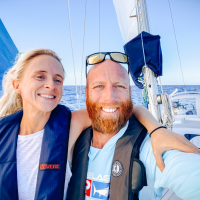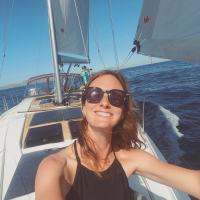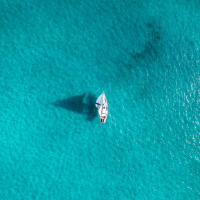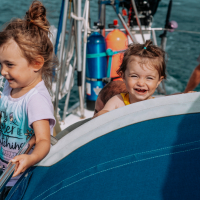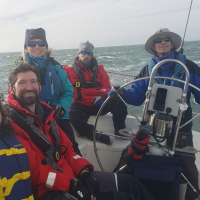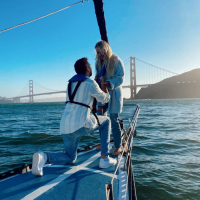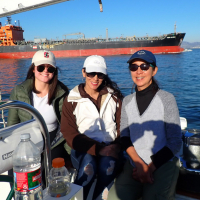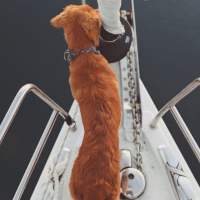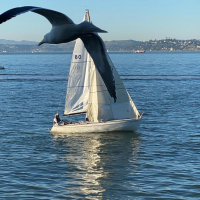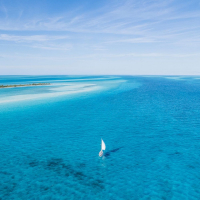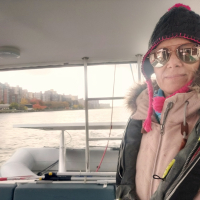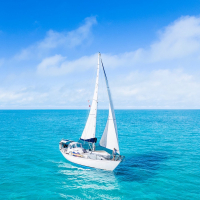
Sailing History From the Wulzen Family Albums
Here are more pictures from the ‘Wayback Machine.’ The Wulzen family sent along some additional photos taken by their grandfather, D. H. Wulzen Jr., in 1898 at Fisherman’s Wharf. They are photos of the local felucca fishing fleet at the time that they were being converted from sail power to motor propulsion. There are some fine square-rigged vessels in the background, plus the somewhat barren hills of San Francisco that look closer to what the hills of Inverness look like today.
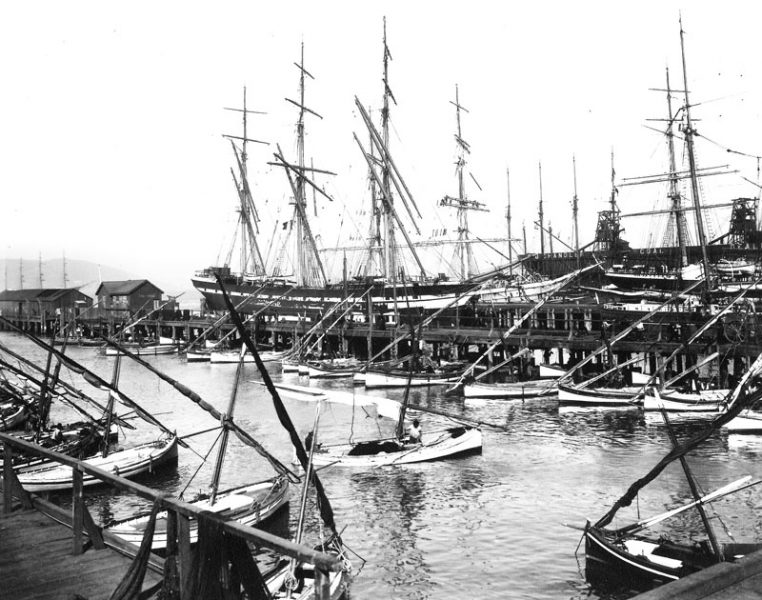
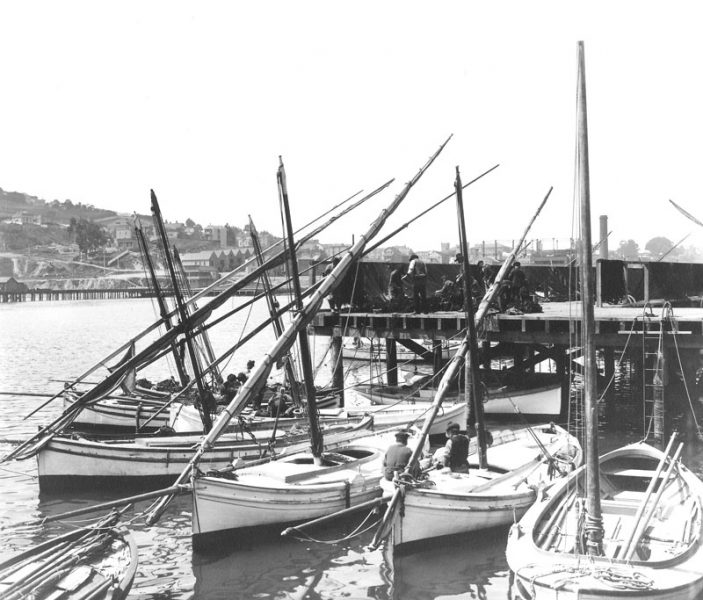
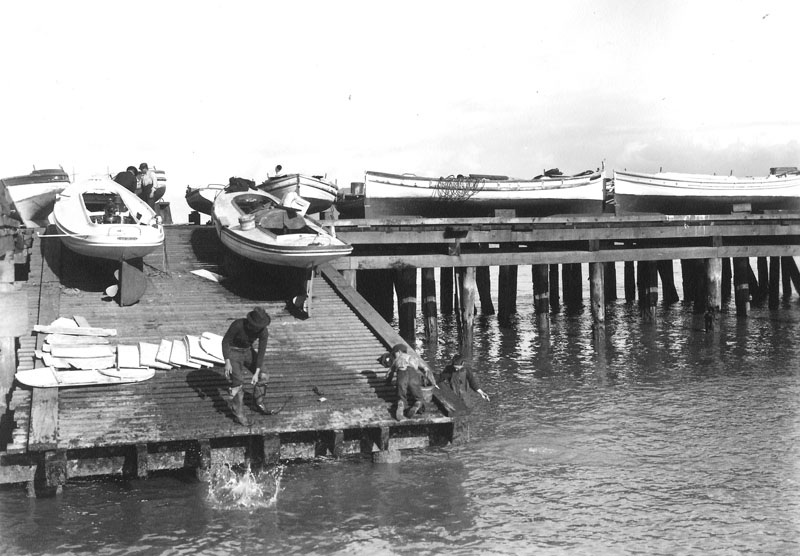
We first shared some of the photos from the Wulzens in February, when William Podzun spoke up in our comment section identifying one of the classic boats. “The first photo looks like the sailboat Angelita, winner of a gold medal in the, I’m guessing, 1920 [ed —1932] or so Olympics in Los Angeles. Angelita’s winning skipper then went on to invent the swim flipper after a trip to the South Pacific, where he saw natives attach leaves to their feet. Angelita is now in Newport, RI.”
We did look up Angelita online to learn she is an 8-Metre sloop designed by Nicholas Potter and built by the Wilmington Boat Works in California in 1930. She became the first American boat to win an Olympic medal, with skipper Owen Churchill sailing her to a gold medal in the 1932 Olympics in Los Angeles. You can check her out here, where you can see the restored Angelita is still beautiful and sailing today.
It’s Good Jibes Time With Moe Roddy and Helena Scutt
This week’s host, Moe Roddy, is joined by Helena Scutt to chat about achieving your dreams and doing what you love in all facets of life. Helena is a mechanical engineer and Olympic sailor who finished 10th in the 2016 Olympic Games in Rio. While racing at the 49erFX Worlds in 2013, she was hit by a boat that broke her spine and two ribs, and lacerated a kidney.
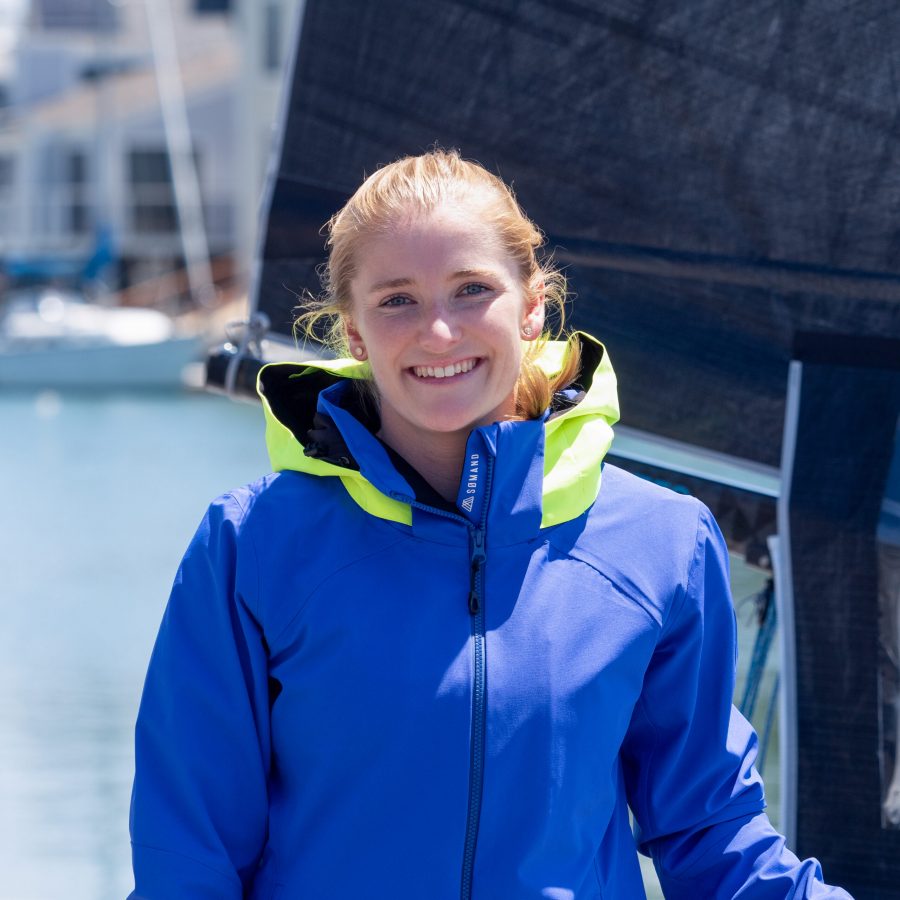
This episode covers everything from Moth sailing to the Olympics. Hear how to recover and come back stronger from a major collision, figure out and achieve your career goals, make sailing more inclusive, keep the joy in sailing, and enjoy the sailing community.
Here’s a small sample of what Moe and Helena talked about:
- Does Helena have dual citizenship?
- What funny story would her parents share about her?
- Why did she major in mechanical engineering?
- What does she do within mechanical engineering?
- How did she recover from her collision in 2013?
- What’s the most important lesson sailing has taught her?
- How did she get into Moth sailing?
- Short Tacks: What’s the greatest compliment she’s received?
You can learn more about Helena on her Instagram @HelenaS9.
Listen to the episode on Apple Podcasts, Spotify, Google Podcasts, and your other favorite podcast spots — follow and leave a 5-star review if you’re feeling the Good Jibes!
Excited to hear from our next guest? Add your name to the list and you’ll get a notification when each new Good Jibes episode is launched.
EWOL Propellers — Setting the Pitch
For more information visit Ewol Propellers.
The Sailing Counter Culture at Jackson’s Hardware
On the way home from meeting the magazine delivery drivers early on Tuesday morning, we stopped at Jackson’s Hardware in San Rafael to ask for some help at the counter. Mark Thompson stepped right up, and soon enough we were talking sailboats. It turns out Mark owns a 42-ft 1974 ferrocement Samson Seabreeze named Thelma Carol, and docks her at San Rafael Yacht Harbor. He was super-appreciative of the personal delivery and for our monthly coverage of the sailing scene and, of course, we’re very appreciative of readers like Mark who have helped us along the way toward our 45th anniversary, coming up in April.

Luckily, Mark could also help with the issues we’re dealing with on the boat. He helped us find the clearly described ‘thingamajig’ that helps you try to unscrew difficult-to-access fasteners. We also picked up some Flitz polish, which we’re hoping will help us clear up the sun-clouded plexiglass in our hatches and portholes. What have you used to buff out hazy plexiglass hatches and portholes?

It’s the kind of experience you’d never have while shopping on Amazon. The “counter culture” at Jackson’s Hardware is one of strong customer service, and it was an added bonus to find a fellow sailor and Latitude 38 reader behind the counter to help.
The Winds of Spring in Baja and Beyond
Baja California is notorious for enhanced northwesterly wind events. Northbound transits to the US West Coast can therefore be challenging in the spring. Likewise, surges of winds along the coast of Central America can change from benign conditions to gale/storm very quickly.
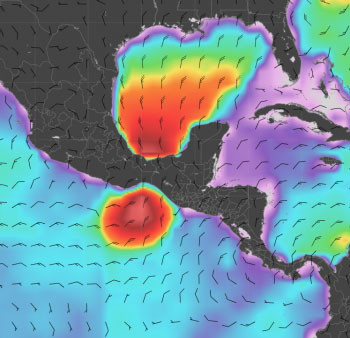
Emily Gilot, meteorologist for Weather Routing Inc., highlights some key discussion points about dominant weather patterns and common locations of wind surges along the Baja California and the Pacific coast of Central America:
- The predominantly north-northwesterly wind regime across Baja California and the Sea of Cortez is produced by high pressure over the northeastern Pacific interacting with a thermal trough that tends to extend from Southern California southeastward toward Cabo Corrientes.
- The winds can be locally enhanced by the geography along Baja and northwestern Mexican Riviera via funneling and by a diurnal strengthening of the thermal trough, increasing its interaction with the high pressure offshore.
- High pressure over the Gulf of Mexico and the northern Caribbean drive the northeasterly wind surge through the Gulf of Tehuantepec, as well as the east-northeasterly surges through the Gulf of Fonseca and the Gulf of Papagayo.
- The Central American wind surges can last a few days to a few weeks. They can generate gale to sometimes storm-force conditions.
- For both areas, it is important to keep bailout ports in mind and incorporate extra time into one’s itinerary to wait out strong wind surges.
To help mariners with planning their coastal cruise or delivery, WRI offers this webinar, available to watch on their website anytime. It includes an overview of the current and forecast weather pattern along Baja and Central America, using SeaWeather.net to illustrate the features discussed.
Sailagram: A Snapshot of February Sailing
Did you get out sailing in February? It has been an incredible spring for many sailors. This month’s Sailagram feed is full of photos submitted by our readers, the real sailors who make our community so amazing.
Do you want to be included in next month’s Sailagram feed? Send your photos to [email protected].

